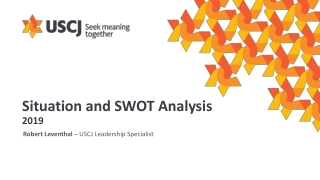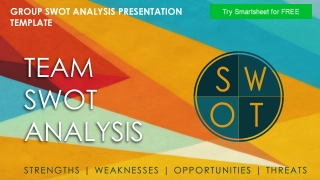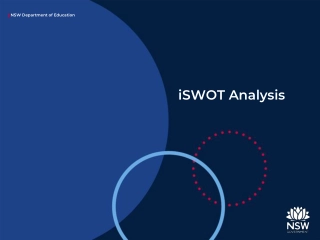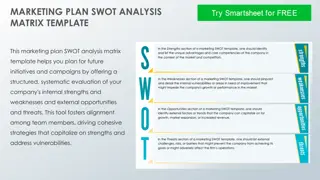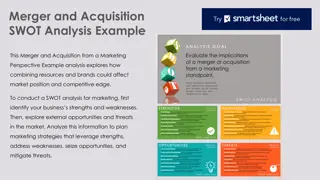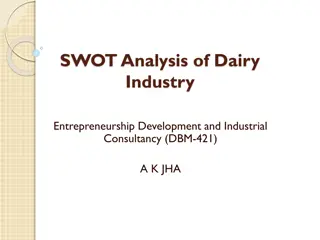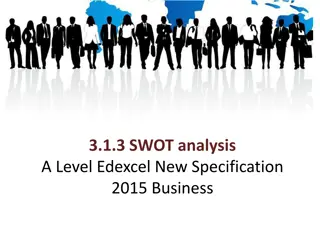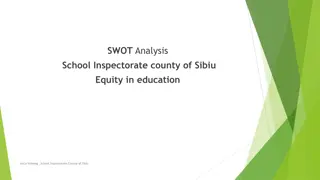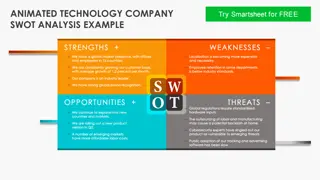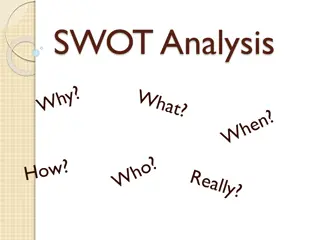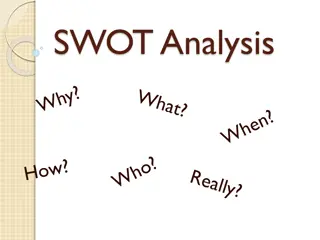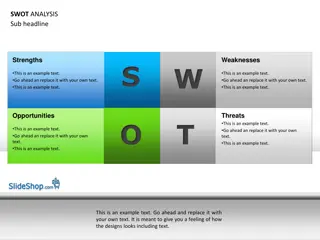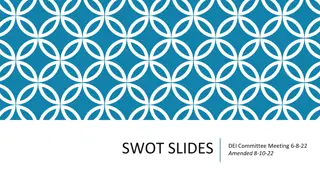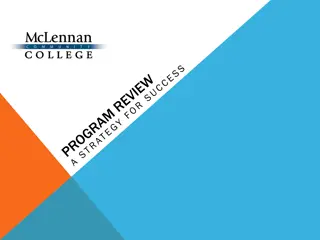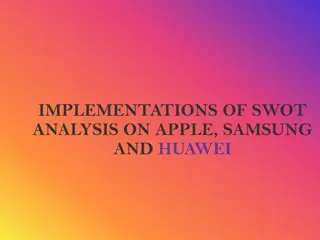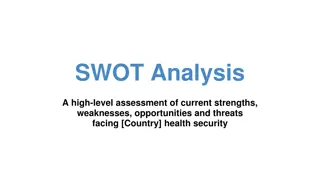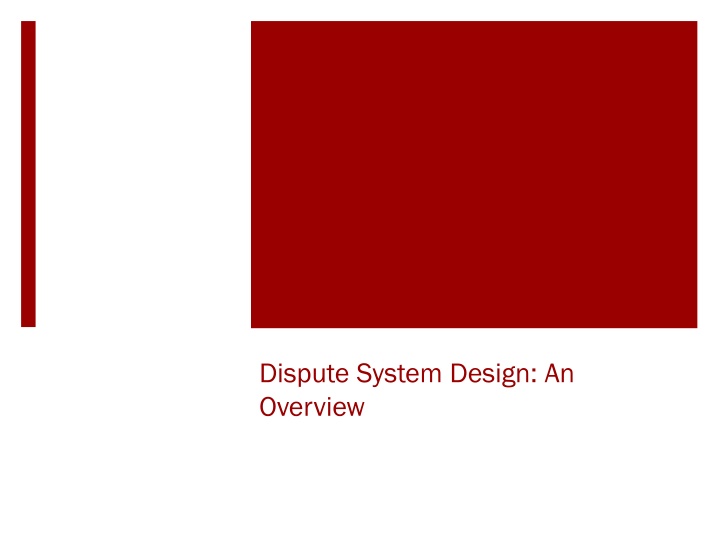
Importance of SWOT Analysis in Business Management
SWOT analysis is a vital tool for businesses to identify internal strengths and weaknesses, as well as external opportunities and threats. This analysis helps in aligning resources with the competitive environment, enhancing strategic decision-making and fostering sustained success.
Download Presentation

Please find below an Image/Link to download the presentation.
The content on the website is provided AS IS for your information and personal use only. It may not be sold, licensed, or shared on other websites without obtaining consent from the author. If you encounter any issues during the download, it is possible that the publisher has removed the file from their server.
You are allowed to download the files provided on this website for personal or commercial use, subject to the condition that they are used lawfully. All files are the property of their respective owners.
The content on the website is provided AS IS for your information and personal use only. It may not be sold, licensed, or shared on other websites without obtaining consent from the author.
E N D
Presentation Transcript
Dispute System Design: An Overview
Dispute System Design What is it? How to think about it? Analytic Framework Example: ODR in the courts
Dispute System Design One or more processes adopted to prevent, manage or resolve a stream of disputes connected to an organization or institution
Array of Design Contexts Public and Community Justice Court ADR Claims Facilities Community [neighborhoods, restorative justice] Conflict and the Organization Commercial: vendors/suppliers, regulators, consumers Employment; ombuds International/Transnational States as Contracting Parties to Treaties; Investor-State Cross-boundary Commerce Transitional Justice
Analytic Framework GOALS What do the system s decision makers seek to accomplish? Which types of conflicts does the system seek to address? STAKEHOLDERS Who are the stakeholders? What is their relative power? What are their interests, and how are their interests represented in the system? CONTEXT & CULTURE How does the context of the DSD affect its viability and success? What aspects of culture (organizational, social, national economic, or other) affect the working of the system? What are the norms for communication and conflict management?
Framework - continued PROCESSES & STRUCTURE Which processes are used to prevent, manage and resolve disputes? If more than one process, are they linked or integrated? What are the incentives and disincentives for using the system? What is the system s interaction with the formal legal system? RESOURCES What financial resources support the system? What human resources support the system? SUCCESS & ACCOUNTABILITY How transparent is the system? Does the system include monitoring, learning, and evaluation? Is the system successful?
Example: Possible GOALS for Court Design LAW Apply the law to resolution of filed complaints Enforce rights and compliance with the law Increase access to justice Promote usefulness of ADR to the public EFFICIENCY Increase case management capacity Increase efficiency of case handling system (time & expense for court, counsel and the parties) Encourage early case preparation
PARTY PROCESS EXPERIENCE Present one s case in public to a tribunal Provide flexible, tailored array of dispute resolution processes, including more participatory and interest- driven options Offer a less adversarial process Preserve/repair parties relationships Promote greater public satisfaction with the justice system
Online Dispute Resolution (ODR) The use of information and communication technology to help parties prevent, manage, and resolve disputes -- including diagnosis, negotiation, mediation, arbitration, courts, algorithmic decision making and more! What are current examples? Ecommerce Public disputes Administrative tribunals Courts (e.g., family, civil, landlord tenant, criminal) Cross-border: EU ODR Directive Smart contracts on the blockchain (crowd-sourced arbitration)
ODR Goals To increase Access to justice User experience satisfaction Provider reputation Efficiency of time, money and information Technical capacity Transparency Delivery of fair and predictable outcomes Data collection for improved analysis & decision making
Power & Control Who designs the system of process options responding to what goals? All parties? Stakeholders? One party? Third party? Regulatory sandbox for legal products & services Who selects process for given case? Disputant? Third party? Fourth party? [technology]

